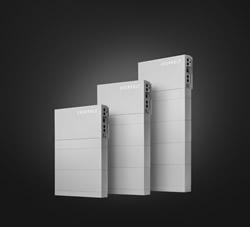DESIGN FEATURES THAT INCREASE FIRE RISK COULD RESULT IN HIGHER PREMIUMS FOR WIND OWNERS AND OPERATORS
New turbine design elements, such as carbon blades and uptower transformers increase not only fire risk, but severity of a turbine fire – which could drive up losses for insurers in the near future
Scottsdale, 7 December 2020 - Wind turbines have grown to staggering new heights, driving design changes at the component level. However, many of these advances in design and technology expose the turbine to additional risk of catastrophic fires. As such, owners and operators could see higher insurance premiums if risk is not proactively managed.
According to a recent webinar, ‘Why wind turbines catch fire' run by Firetrace, the leading supplier of automatic fire suppression systems, and featuring expert speakers from DNV GL and Eastern Kentucky University, there are number of common turbine design features that increase the risk of fire that may impact the insurability of projects in the near future.
For example, as wind turbines have increased in size, blades have had to get longer and lighter. This led some manufacturers to incorporate carbon - a known conductor of heat and electricity - into composite materials to lighten the structure while keeping it robust in the face of extreme weather.
Lightning protection systems must also be re-designed in line with new blade lengths and structures, with improperly fitted systems leaving non-continuous paths with multiple spark gaps.
Faulty electrical transformers are a common root cause of wind turbine fires due to arc flashes - and depending on their placement in the turbine, can cause total destruction of the asset. According to research undertaken by DNV GL, of 61 catastrophic fires in modern wind turbines over the past 7 years, a majority of these turbines had uptower transformers. While the transformers were not always the root cause of the fire, their presence in the nacelle is associated with more severe damage to the turbine.
Splices in tower cables may also generate enough heat to start a fire. Although cable materials are typically not very flammable, fires that ignite inside the tower are very difficult to suppress.
Many of these components, such as tower cables and transformers, are essential for power generation and transmission, or have significant benefits for overall asset lifetime. However, without proactive effort to manage the significant fire risk due to the designs outlined above, insurers are likely to take a more discerning approach to underwriting assets that have these features.
Already, insurance rates for wind power have increased by more than 20-40% in the past year as the market hardens in response to a series of high-profile losses. As such, while turbine design features do not currently impact rates, insurers are likely to increase rates or require evidence of proactive risk management before a project can be underwritten. This is already the case for other forms of power generation, such as CCGT, wherein underwriters consider not only additional risk from certain components, but also the impact of upgrades and retrofitted mitigation systems when calculating premiums for these assets.
Angela Krcmar, Global Sales Manager for Wind, Firetrace said in the webinar: "We have had conversations around insurance with [owners and operators] in the past. A lot of times, it's just based on the overall risk of the power gen class that is being operated and insured. As turbines increase in not only size but value, from a protection standpoint, we expect [greater policy restrictions] will become more prevalent. As of now, there isn't a specific rate reduction for lower-risk turbines, but it's on the horizon."
Angela continued, "Once turbine manufacturers, owners, and operators are aware of the risk associated with certain ignition sources, we can start to talk about mitigating these potential causes or failure points with solutions like arc detection systems or fire suppression systems. These solutions aren't just available at the design stage - they can be retrofitted by owners who understand the need for full fire protection at all ignition sources."
-ENDS-
About Firetrace
Firetrace designs and manufactures automatic fire suppression systems that keep your business, people, and equipment safe. Based out of Scottsdale, Arizona, USA, Firetrace has global sales and support capability, with over 250,000 systems installed in 75 countries.
Firetrace is owned and operated by Halma plc, a global group of life-saving companies. Halma companies provide innovative solutions to many of the key problems facing the world today, from water security to preventable blindness.
http://firetrace.com/
Featured Product

EVERVOLT home battery storage: Standby power with or without solar
Renewable energy stored in an EVERVOLT home battery system is the perfect backup plan against an uncertain utility grid and weather events. Run key appliances longer and live life when the unexpected happens. EVERVOLT battery storage systems are covered by a complete 12-year warranty from Panasonic.
